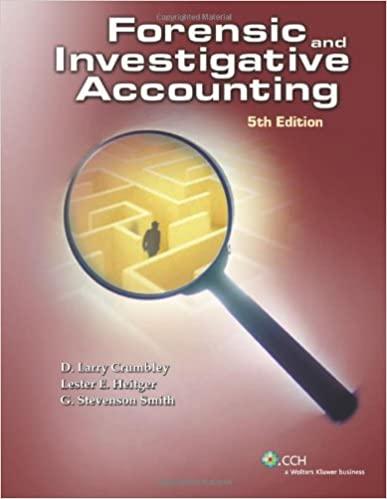Question
Cranberry Products is a firm with three major product lines, cereals, baby food, and animal food. The income statement for the year ended April 30,
Cranberry Products is a firm with three major product lines, cereals, baby food, and animal food. The income statement for the year ended April 30, year 4, follows; the income statement was prepared by product line using full-absorption costing. Cranberry Products Company Income Statement For the Year Ended April 30, Year 4 Cereals Baby Food Animal Food Total Sales in units 2,000 500 500 3,000 Revenue from sales $1,000,000 $400,000 $200,000 $1,600,000 Cost of Sales Direct materials $330,000 $160,000 $100,000 $590,000 Direct labor 90,000 40,000 20,000 150,000 Factory overhead 108,000 48,000 24,000 180,000 Total cost of sales $528,000 $248,000 $144,000 920,000 Gross margin $472,000 $152,000 $56,000 $680,000 Operating costs Selling costs Advertising $50,000 30,000 20,000 $100,000 Commissions 50,000 40,000 20,000 110,000 Salaries and related benefits 30,000 20,000 10,000 60,000 Total selling costs $130,000 $90,000 $50,000 $270,000 General and administrative costs Licenses $50,000 $20,000 $15,000 $85,000 Salaries and related benefits 60,000 25,000 15,000 100,000 Total general and administrative costs $110,000 $45,000 $30,000 $185,000 Total operating costs $240,000 $135,000 $80,000 $455,000 Operating profit before taxes $232,000 $17,000 $(24,000) $225,000 Other Data 1. Cost of sales: The companys inventories of direct materials and finished products do not vary significantly from year to year. The inventories at April 30, year 4, were essentially identical to those at April 30, year 3. Factory overhead was applied to products at 120% of direct labor cost. The factory overhead costs for the year 4 fiscal year follow: Variable indirect labor and supplies $ 15,000 Variable employee benefits on factory labor 30,000 Supervisory salaries and related benefits 35,000 Plant occupancy costs 100,000 Total $180,000 There was no overapplied or underapplied overhead at year-end. 2. Advertising: The Company has been unable to determine any direct causal relationship between the level of sales volume and the level of advertising expenditures. However, because management believes that advertising is necessary, an annual advertising program is implemented for each product line, which is advertised independent of the others. 3. Commissions: Sales commissions are paid to the sales force at the rate of 5% on the cereals and 10% on the baby food and animal food. 4. Licenses: Various licenses required for each product line are renewed annually. 5. Salaries and related benefits: Sales and general administrative personnel devote time and effort to all product lines. Their salaries and wages are allocated on the basis of managements estimates of time spent on each product line. Required: A. Cranberrys controller has recommended that the company perform a CVP analysis of its operations. As a first step, the controller has requested that you prepare a revised income statement for Cranberry that employs a product contribution margin format that will be useful in CVP analysis. The statement should show the contribution margin for each product line and the operating profit before taxes for the company as a whole. B. Cranberrys controller is preparing a report, which he will present to the other members of top management, explaining CVP analysis. Expand on the following points for the report: 1. The advantages that CVP analysis can provide to a company. 2. The difficulties that Cranberry could experience in the calculations involved in CVP analysis. 3. The dangers that Cranberry should consider in using the information derived from the CVP analysis.
Step by Step Solution
There are 3 Steps involved in it
Step: 1

Get Instant Access to Expert-Tailored Solutions
See step-by-step solutions with expert insights and AI powered tools for academic success
Step: 2

Step: 3

Ace Your Homework with AI
Get the answers you need in no time with our AI-driven, step-by-step assistance
Get Started


